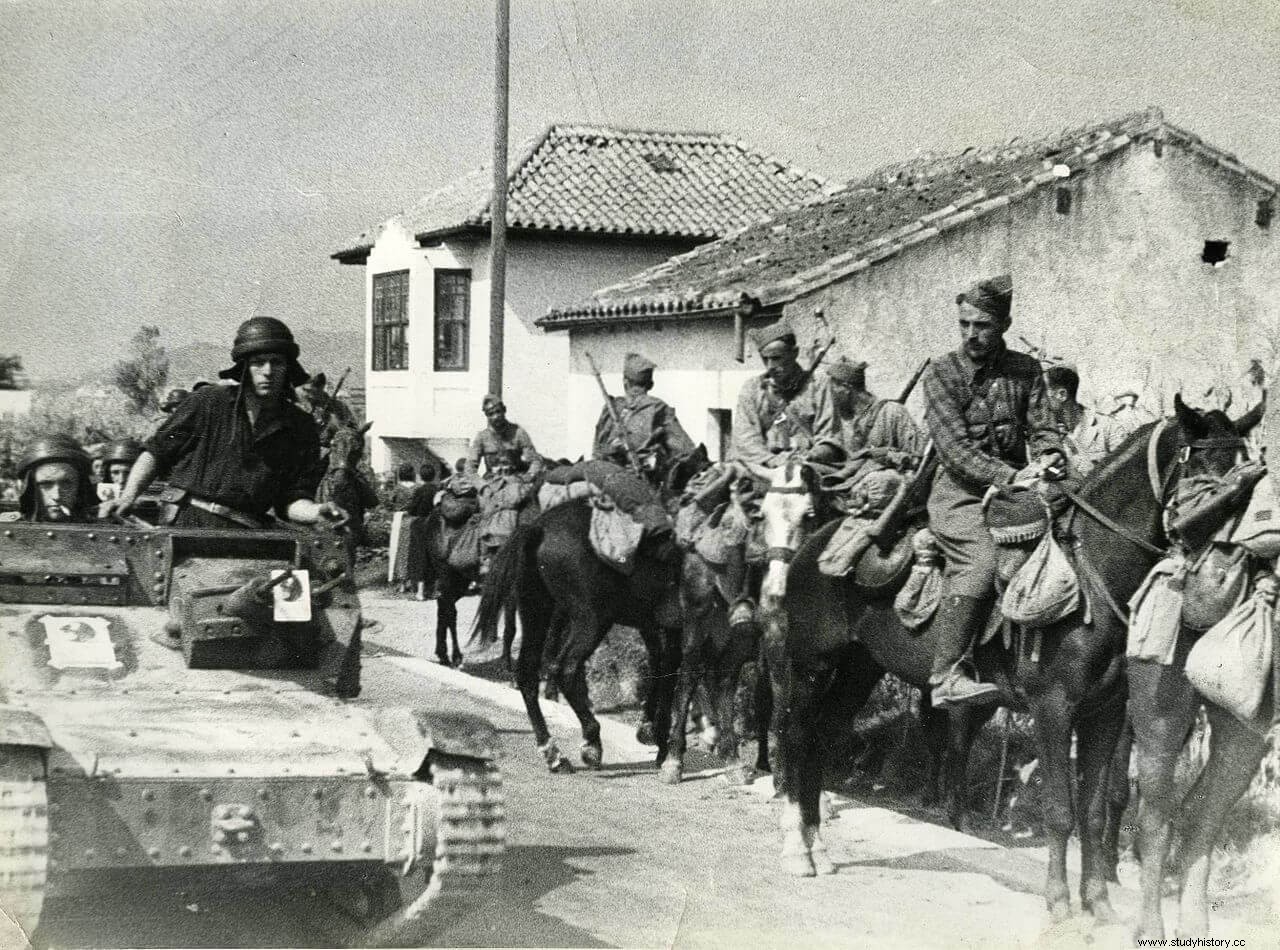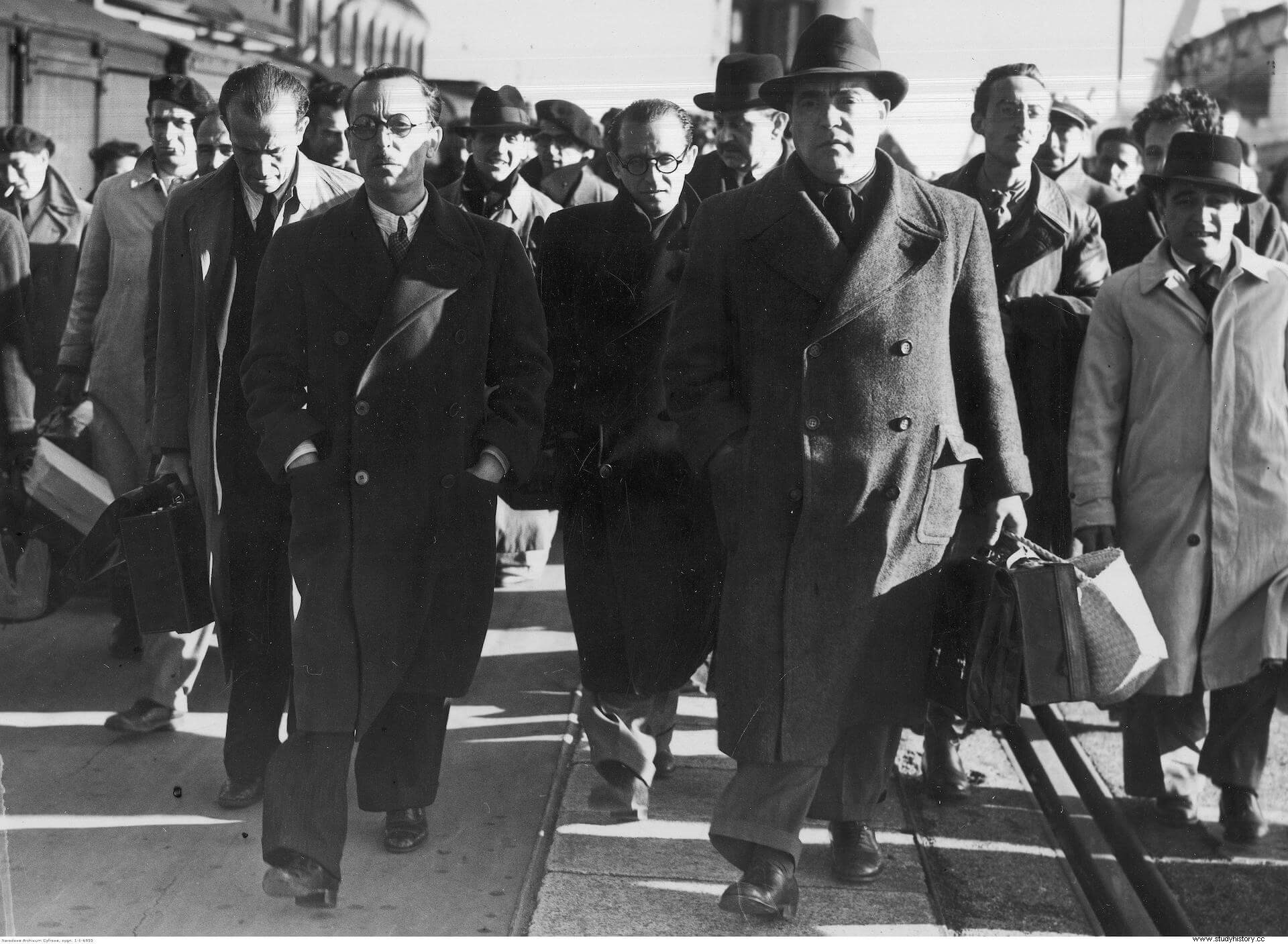
The operation, which was intended to be a limited military action , but politically ambitious –maintaining the spirit of resistance until the international situation allowed a more favorable solution to the conflict for republican interests–, ended up wearing down a good part of the most combative units that Vicente Rojo had while they disappeared, after the Munich conference, the possibilities for international powers to mediate a negotiated solution to the war.
The campaign of Catalonia
In this situation, the invasion of Catalonia by the Francoist Army of the North, led by General Dávila and which had become a powerful mass of maneuver deployed from the Pyrenees to the Ebro delta, seemed imminent. The President of the Government, Juan Negrín, urgently needed a new action of strategic significance in the center's theater of operations, before the end of the year. Plan P, designed to split the rebellion territory in two by Extremadura, cherished by Rojo throughout the war, was now materially unfeasible, so this need translated into a more limited, but still ambitious, plan to operate in Motril, Brunete and Peñarroya, however, was delayed due to disagreements in the Republican military leadership. In the background of the discrepancies was General Miaja's fear of diverting troops from the Army of the Center, which he jealously kept for the defense of Madrid and which, however, had not participated in major operations since the spring and summer of 1937.

These enemy delays allowed Franco to freely launch his offensive on Catalan territory. The Army of the North, with nearly 275,000 men, began the campaign against Hernández Saravia's Eastern Army Group (GERO), which had more troops, some 300,000 men, but an alarming material inferiority. One day before Christmas Eve 1938, Franco's army corps broke through the front:those from Urgel (Muñoz Grandes) and the Maestrazgo (García Valiño) did so through Tremp, and the one from Navarra (Solchaga), together with the Italian CTV (Gambara), by Serós. The Republican command tried to counteract the offensive by partially launching – the action in Motril was ruled out – its plans in the central theater, giving rise to the battle of Peñarroya throughout January. There the Republican Army of Extremadura (Escobar) achieved notable initial success which, however, as in other offensive attempts by the Popular Army throughout the war, was soon annulled, in this case by the action of the Queipo de Llano troops. . The action failed to stop Franco's advance in Catalonia, whose troops took Tarragona on January 15 and Barcelona on the 26th.
Towards the end of the civil war
The hopes that the Catalan capital would become a second Madrid no longer made sense in 1939, neither because of the state of the army nor because of the situation in the rear. Already in February, Gerona and Figueras would fall, and by the 10th the passes to France at Port Bou and La Junquera had been closed. About 230,000 combatants and 45,000 civilians crossed the Pyrenees harassed by aviation. The republican government had also left the country. Rojo was not in favor of prolonging the war, but Negrín returned to the loyal territory to support the resistance to the death, backed by sectors related to the Communist Party. The well-known meeting at the Los Llanos aerodrome on February 16 confirmed, however, the null support that he would receive from the military leadership, as he would demonstrate a few weeks later. Negrín was willing to renew the military leadership with like-minded men; To a great extent, the militia commanders of the Army of the Ebro:Líster, Modesto, Tagüeña...

The first symptom of opposition to these measures was the uprising at the Cartagena naval base on March 4 that, although it was finally put down, was about to provoke a landing in its support of Francoist troops in the heart of government territory. Meanwhile, the coup that caused the well-known situation of civil war within the Republic itself was launched. On the night of March 5, Julián Besteiro proclaimed from Madrid the creation of a National Council for Defense and Married he strove to start talks to achieve an honorable peace "between the military." To oppose the units of the Army of the Center related to the communists, the new council relied on the army corps of the anarchist militiaman Cipriano Mera, giving rise to bloody days in the capital while the Republic finished decomposing. Negrín's “extreme resistance” had been an illusion, but the attempt at negotiated peace was no less. The so-called Gamonal talks in March confirmed that Franco would only accept an unconditional surrender. On the 25th he declared the negotiations broken and ordered to advance on all fronts without the Republican troops having the will to oppose. The act of surrender of the capital was staged on the 28th among the ruins of the Clinical Hospital of the University City that had become world famous in the early stages of the war. Three days later, on April 1, the last part of the war was signed in Burgos, witnessing the end of the civil war Spanish.
